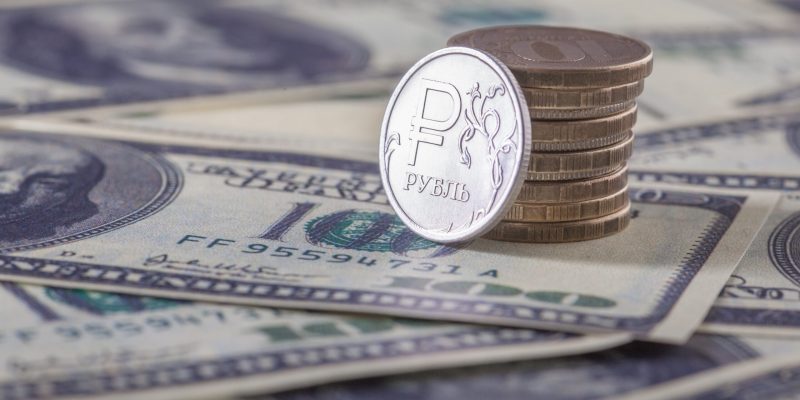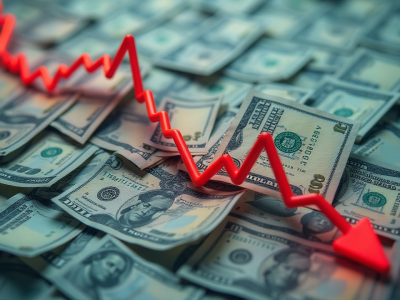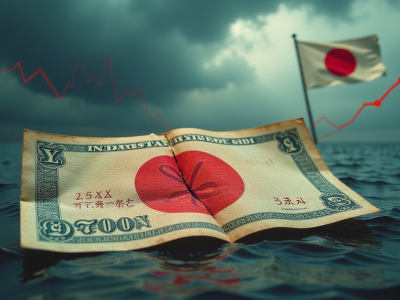
Russia’s ruble has plunged to its lowest level against the dollar since the early weeks of the full-scale invasion of Ukraine, underscoring the growing strain on the nation’s economy.
The currency hit 110 against the dollar on Wednesday, a level not seen since March 16, 2022.
This marks a sharp depreciation from its pre-war trading range of 75-80 to the dollar in early 2022.
The ruble’s slump comes amid fresh sanctions from the US, including measures targeting Gazprombank, Russia’s third-largest lender.
Gazprombank played a pivotal role in processing payments for the dwindling natural gas exports to Europe, highlighting the growing constraints on Moscow’s foreign currency inflows.
BCS brokerage analysts described recent forex market activity as “resembling panic” amid uncertainty, and many investors are awaiting government measures to stabilize the situation.
Looking ahead, analysts predict that the ruble may weaken further to 115-120 per dollar by the end of the year.
Calls for intervention, including measures to compel exporters to sell more foreign currency and increased state forex sales, are growing.
Sofya Donets, an analyst at T-Bank, suggested that the government could adjust budget rule parameters or impose additional capital controls to support the currency.
Gazprombank sanctions and stock market plunge
Sanctions on Gazprombank follow earlier rounds of penalties that had largely spared Russian gas exports due to Europe’s dependence.
With Europe now significantly reducing its reliance on Russian energy, the sanctions raise concerns about declining gas revenues, which are crucial for sustaining Moscow’s budget and war efforts.
The impact of these sanctions extends beyond currency markets.
Russia’s stock market has shed over 20% of its value this year as investors shift to bank deposits, which offer higher returns than equities.
Central bank rates, recently raised to 21%, further incentivize this trend while tightening borrowing conditions across the economy.
BCS brokerage analysts described recent forex market activity as “resembling panic” amid uncertainty, and many investors are awaiting government measures to stabilize the situation.
Weak ruble hits purchasing power, fuels inflation
A weakening ruble poses immediate risks to ordinary Russians, primarily through rising prices for imported goods.
Inflation, already projected to reach 8.5% this year—double the central bank’s target—continues to erode purchasing power.
This inflationary surge is reflected in everyday life. The “borscht index,” a cost-of-living measure tracking key soup ingredients, has recorded a 20% year-on-year increase.
Central Bank interventions, including last month’s rate hike, have done little to curb these pressures, and analysts anticipate another rate increase in December.
Kremlin balances economic pain with budget gains
Despite its economic drawbacks, a weak ruble benefits the Kremlin by bolstering revenues from energy exports.
Finance Minister Anton Siluanov has downplayed the devaluation’s impact, suggesting it favours exporters and partially offsets the high interest rates imposed by the Central Bank.
Russia has redirected much of its oil exports to China and India, mitigating the loss of European energy markets.
However, the Kremlin faces mounting fiscal challenges, with military spending consuming nearly one-third of the 2024 budget—the highest proportion since the Cold War.
Military spending strains the economy
The war in Ukraine has upended Russia’s economic priorities, with surging military expenditures and labor shortages straining long-term growth.
As working-age men are mobilized or flee the country, critical industries face worker shortages, further dampening economic output.
Economists warn that the country is entering stagflation, marked by high inflation and stagnant growth.
Analysts at the Institute of Economic Forecasting point to slowing activity in key sectors, noting that only military-linked industries show any significant growth.
“The militarization of the economy is stifling development in other sectors,” wrote Russian economists Alexander Kolyandr and Alexandra Prokopenko in a recent report.
They emphasized that growth outside military-linked industries is either negligible or non-existent.
The post Russian ruble hits lowest level since early weeks of Ukraine invasion appeared first on Invezz












